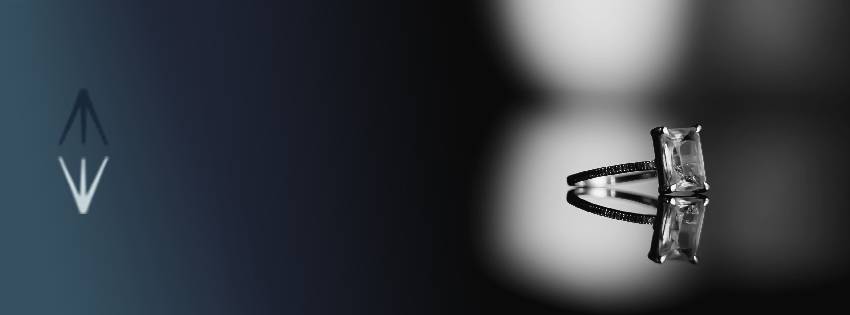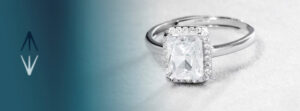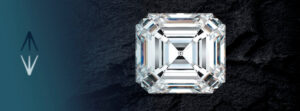Buying a diamond is a significant investment, so it’s essential to be well-informed before making a decision. In this guide, we’ll cover the fundamental aspects to help you confidently choose the perfect diamond. From understanding the 4Cs (cut, color, clarity, and carat) to selecting the right place to buy, this guide will provide you with all the necessary information. We will explore the different types of diamonds, how to evaluate their quality and authenticity, and how to ensure your purchase is a safe investment.
Introduction to Our Complete Guide to Buying Diamonds
Diamonds are more than just precious stones; they are symbols of love, commitment, and luxury. Before buying, it’s important to know all the factors that influence their value and quality. This guide is designed to help you navigate the buying process, ensuring you get the best value for your investment.
The 4Cs: Cut, Color, Clarity, and Carat
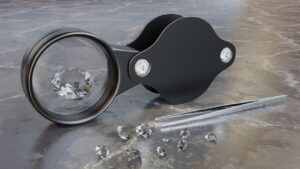
Cut
A diamond’s cut refers to how its facets interact with light. A good cut maximizes the diamond’s brilliance, regardless of its shape. The cut quality ranges from Excellent to Poor.
Color
A diamond’s color ranges from colorless to shades of yellow or brown. The color scale for diamonds goes from D (colorless) to Z (visible color). Colorless diamonds are the rarest and most valuable.
Clarity
Clarity measures the purity of the diamond and the presence of inclusions or blemishes. The clarity scale ranges from Flawless (no visible imperfections) to Included (visible inclusions).
Carat
The carat is the unit of weight for a diamond. One carat equals 200 milligrams. The size of the diamond significantly affects its value, although a higher carat does not always mean better quality.
If you want to learn more about the 4Cs, visit our content on Quality in 4Cs
Diamond Certification
Diamond certification is crucial when making a purchase. Make sure the diamond comes with a certificate from recognized gemological laboratories such as GIA (Gemological Institute of America) or AGS (American Gem Society). These certificates provide a detailed evaluation of the diamond’s characteristics, including the 4Cs (cut, color, clarity, and carat), guaranteeing its authenticity and quality. They also include details about symmetry, polish, and fluorescence, factors that affect the diamond’s appearance and value. Buying a certified diamond protects you from fraud and ensures a quality investment.
Different Diamond Shapes
There are various diamond shapes, each with a unique appeal. The most popular include:
- Round Brilliant: Ideal for maximizing brilliance and light dispersion.
- Princess: A square or rectangular cut with clean, modern lines.
- Emerald: Characterized by its rectangular cut and long facets, highlighting the stone’s clarity.
- Oval: An elongated shape that offers a similar effect to the round brilliant but with a more elongated silhouette.
- Cushion: A blend between round and square cuts, with rounded edges and a vintage style. The choice of shape depends on personal style and the design of the jewelry in which the diamond will be set. It’s important to consider how the shape influences the diamond’s brilliance and visual size.
![]()
![]()
![]()
How to Evaluate Diamond Quality
Besides the 4Cs, other key factors in evaluating a diamond include:
- Symmetry: Reflects the precision of the cut. Perfect symmetry maximizes the diamond’s beauty.
- Polish: Refers to the smoothness of the diamond’s surface. Excellent polish enhances the stone’s ability to reflect light.
- Fluorescence: Some diamonds emit visible light when exposed to ultraviolet light. Fluorescence can affect the diamond’s appearance under different lighting conditions. The combination of these factors determines the diamond’s quality and value. A thorough evaluation helps identify the characteristics that are most important to the buyer.
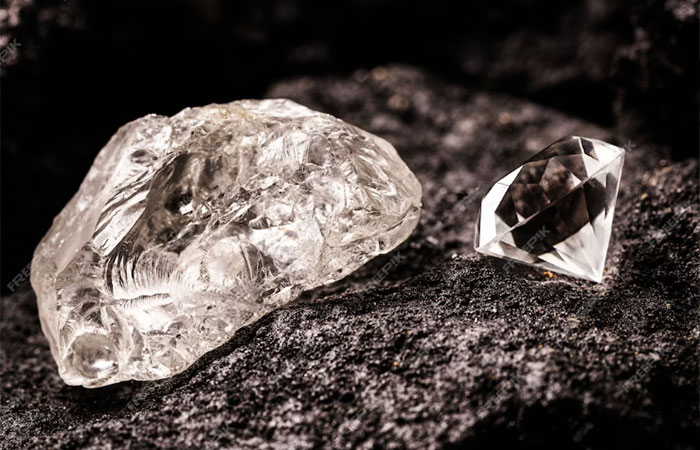
Where to Buy Diamonds
There are two main options for buying diamonds:
- Physical Stores: Allow you to see the stone in person, which is crucial to appreciate its brilliance and characteristics.
- Online Stores: Offer convenience and a wide selection. However, it’s essential to verify the seller’s reputation and ensure they provide gemological certificates and a clear return policy. In both cases, it is crucial to buy from trusted sellers and review their return and warranty policies. Additionally, look for reviews and testimonials from other customers to ensure a safe and satisfactory purchase.
Budget Considerations
Setting a budget is a fundamental step in buying a diamond. Prices can vary significantly depending on the diamond’s characteristics. Here are some strategies to maximize value within your budget:
- Size vs. Quality: Consider choosing a high-quality diamond even if it is smaller, as quality significantly affects appearance.
- Minor Imperfections: Diamonds with minor inclusions, not visible to the naked eye, can be a more economical option without sacrificing beauty.
- Setting Options: Choose a setting design that enhances the diamond and fits your budget. Establishing a clear budget helps focus your search and find the diamond that best suits your needs and expectations.
These sections provide a comprehensive guide for diamond buyers, helping them make informed and secure decisions at every step of the process.
Frequently Asked Questions About Buying Diamonds
How can I tell if a diamond is real?
You can perform home tests such as the breath test or the water test. For complete certainty, it is advisable to use a diamond tester or consult a gemologist.
What type of diamond certification is the most reliable?
The most reliable certifications come from recognized gemological laboratories such as GIA (Gemological Institute of America) and AGS (American Gem Society).
Are diamonds with ideal cuts always the most expensive?
Not necessarily. Although a good cut can increase the price of a diamond, other factors such as color, clarity, and size also influence the cost.
Is it better to buy diamonds online or in a physical store?
It depends on your preferences. Online shopping offers greater variety and convenience, while physical stores allow you to see the diamond in person before purchasing.
How can I protect my investment in diamonds?
Insure your diamonds against loss, theft, or damage. Also, keep the certificates of authenticity and maintain a record of your purchases.
Conclusion
Buying a diamond is an important decision that requires careful consideration of several factors. By understanding the 4Cs, evaluating diamond quality, and choosing a trusted seller, you can make an informed purchase. With the right information and a meticulous approach, you can find a diamond that is not only beautiful but also represents a valuable investment for the future.

